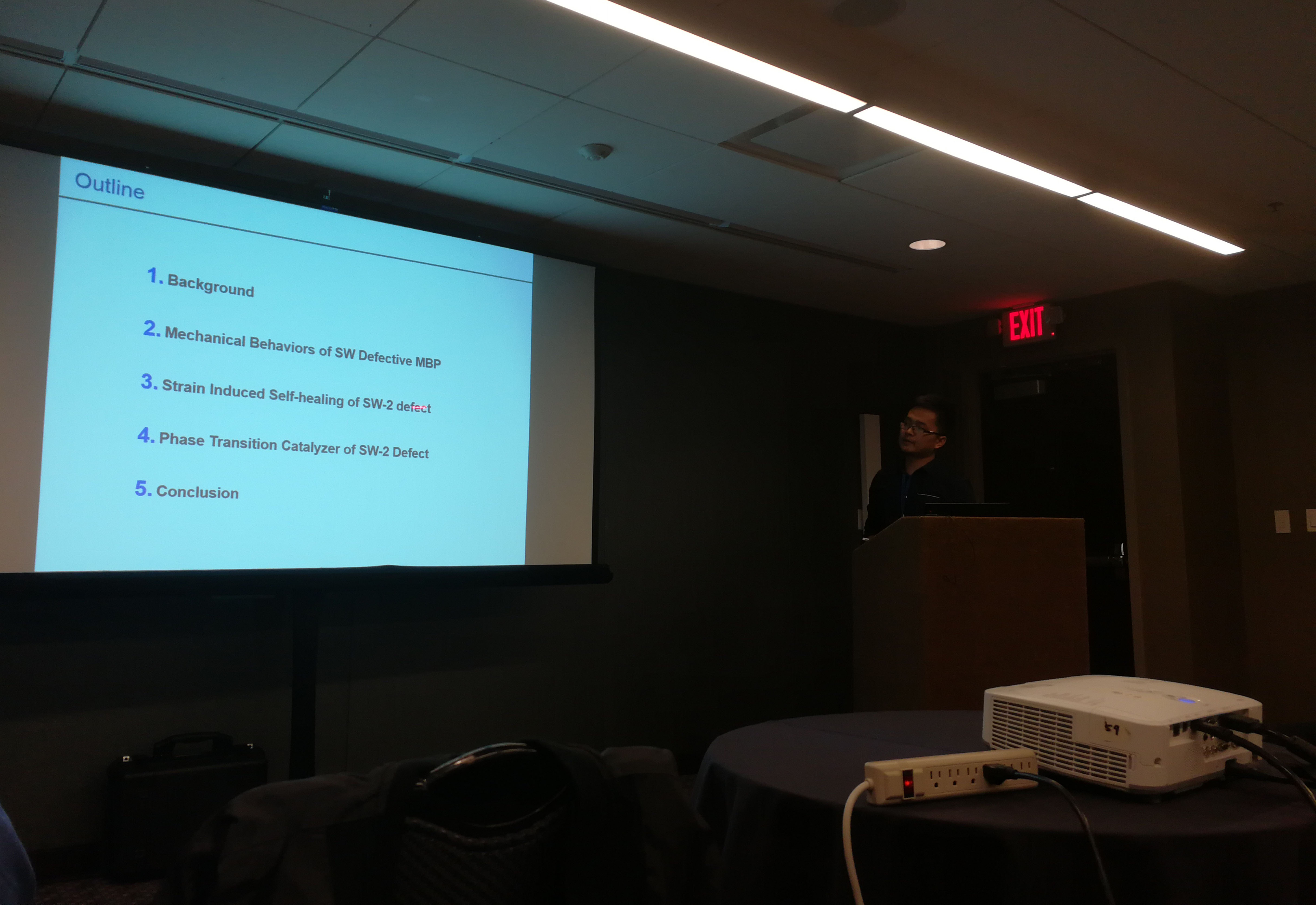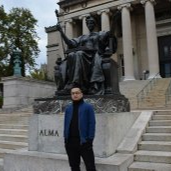Mechanical Behaviors of Stone-Wales Defective Monolayer Black Phosphorene
Date:

The 18th National Congress for Theoretical and Applied Mechanics (NCTAM) was held from June 5th to 9th, 2018, in Chicago, the third-largest city in the United States. The congress brought together mechanics researchers from around the world. The five-day conference featured a comprehensive program that encompassed traditional mechanics, including vibration analysis, structural optimization design, and dynamics analysis, as well as emerging interdisciplinary fields such as mechanics of two-dimensional materials, biomechanics, and mechanical solutions to environmental challenges. The congress demonstrated that mechanics, while maintaining its crucial role in traditional industries, continues to play a vital role in emerging fields.
I participated in the session titled “Mechanics of Multifunctional 2D Materials – Graphene and Beyond.” The session covered diverse research topics, including adhesion and friction behavior between graphene and interfaces, mechanical behavior of polycrystalline 2D materials, dynamic fracture mechanics of 2D semiconductor materials, and topological toughening of 2D materials. My presentation, “Mechanical Behaviors of Stone-Wales Defective Monolayer Black Phosphorene,” focused on the mechanical properties of black phosphorene with Stone-Wales defects. Black phosphorene, exfoliated in 2014, has gained widespread attention in optoelectronic applications due to its excellent mechanical flexibility and suitable bandgap. My presentation addressed the critical issue of defects in 2D materials, which are particularly vulnerable to environmental exposure during preparation, characterization, and application. I presented recent progress in three aspects: the impact of defects on mechanical behavior, defect self-healing mechanisms, and defect-induced structural phase transitions. The presentation generated significant interest among peers, leading to detailed discussions about computational methodologies during the Q&A session.
The scholarly atmosphere continued beyond the formal sessions, with participants engaging in further discussions about their research interests. This congress provided my first exposure to the direct interaction of different research groups, diverse research directions, and varying methodological approaches. The discussions both during and after the sessions were highly enlightening. Moreover, the congress gave me a comprehensive understanding of the discipline’s current landscape and future directions, which will undoubtedly significantly influence my future research endeavors.
